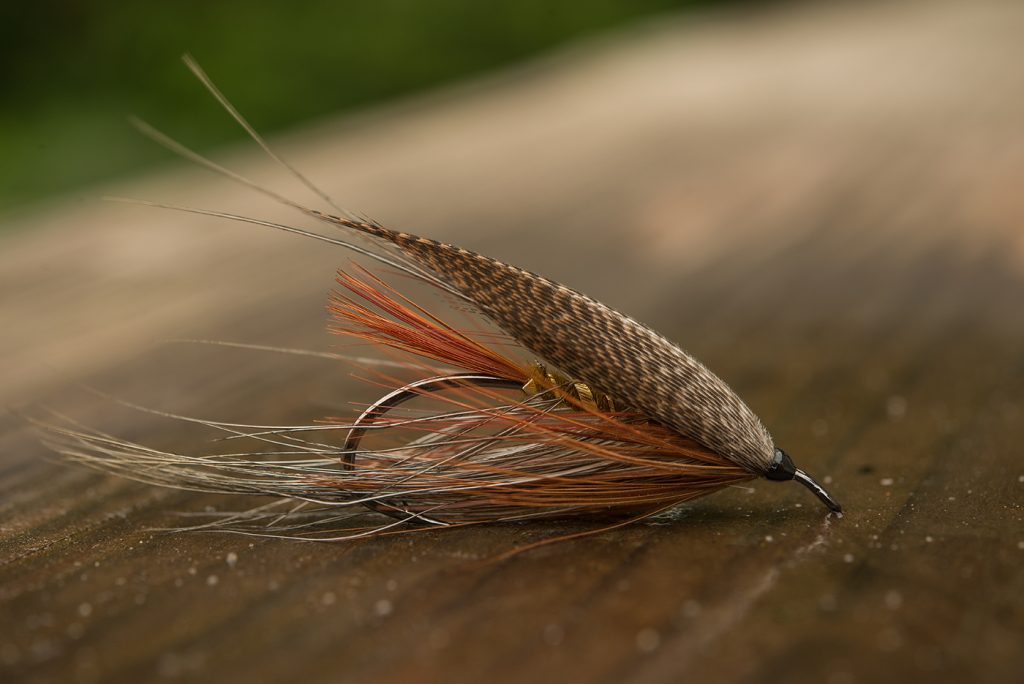
The classic Spey flies are beautiful flies, and one could point to several flies, but among the most classic of the classics is The Lady Caroline. As stunning and beautiful as the “fancy flies” are, I find the Spey flies as beautiful in their simplicity and subtle nuances.

They are undoubtedly a product of what the local Spey-side fly fishers had available. Very few of the flies have materials that wouldn’t be readily available at most farms or after an estate shoot. That’s not to say that some of the materials are hard, if not impossible to get today, but in their own time, most of them weren’t.
I’m not sure how the pattern is. Arthur E. Knox doesn’t list it in his classic book from 1872, “Autumns on the Spey”. It’s listed in George M. Kelson’s book, “The Salmon Fly” from 1895, so The Lady Caroline may be from the time between the two books. However, Kelson describes it as “An old standard Spey fly”, which indicates that it could very well be older. That’s maybe a subject for a future blog.
Kelson gives this dressing for the fly:
Tail.- Golden pheasant red-breast, a few strands only.
Body.- Brown and olive-green Berlin wool mixed together in proportion of one part olive-green, two parts brown.
Ribs.- From separate starting points, of gold tinsel (narrow), gold twist, and silver twist, wound the usual way, an equal distance apart.
Hackle.- Grey heron, from tail (tied in at the point as usual) wound alongside gold tinsel.
Throat.- Golden pheasant red-breast, two turns.
Wings.- Two strips of Mallard showing brown points and light roots.
All simple materials, although the heron can be hard to get today. But still not an easy fly to tie. I think most who’ve tried know that tying the low set mallard wings can be a struggle. Arthur E. Knox says: “Spey flies properly so called are simple and both in composition and appearance they are tied with as much skill and care by best native artists as is exhibited in the fabrication of the most complicated gaudy lures…”

Looking at The Lady Caroline you find the two common traits of the classic Spey flies: The low set wings and the long body hackle. They are as effective today as they have always been and personally I always carry a few in the box. When tied for fishing, be mindful that the body hackle is tied sparse. First of all it moves better, but a hackle too dense also tends to turn the fly on its head.
Here Håkan shows you how to tie The Lady Caroline.
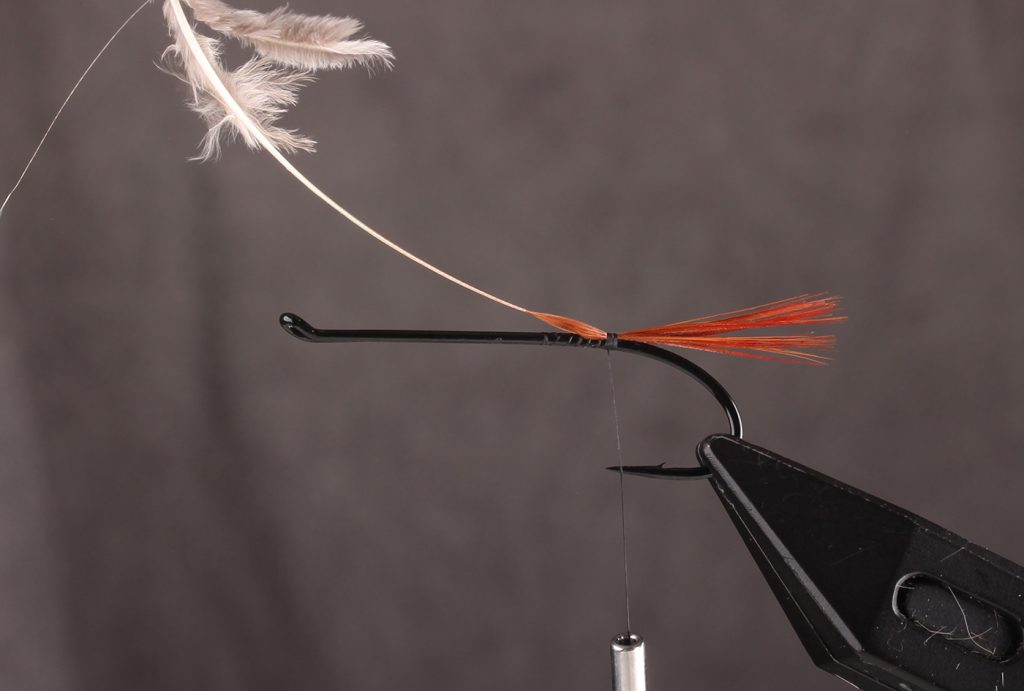
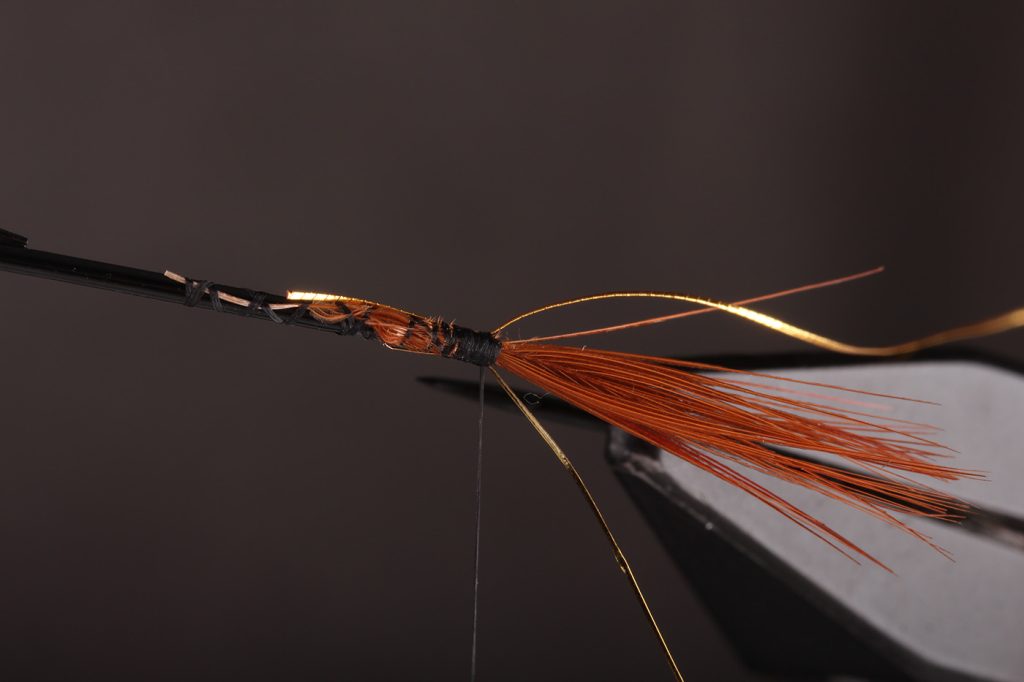
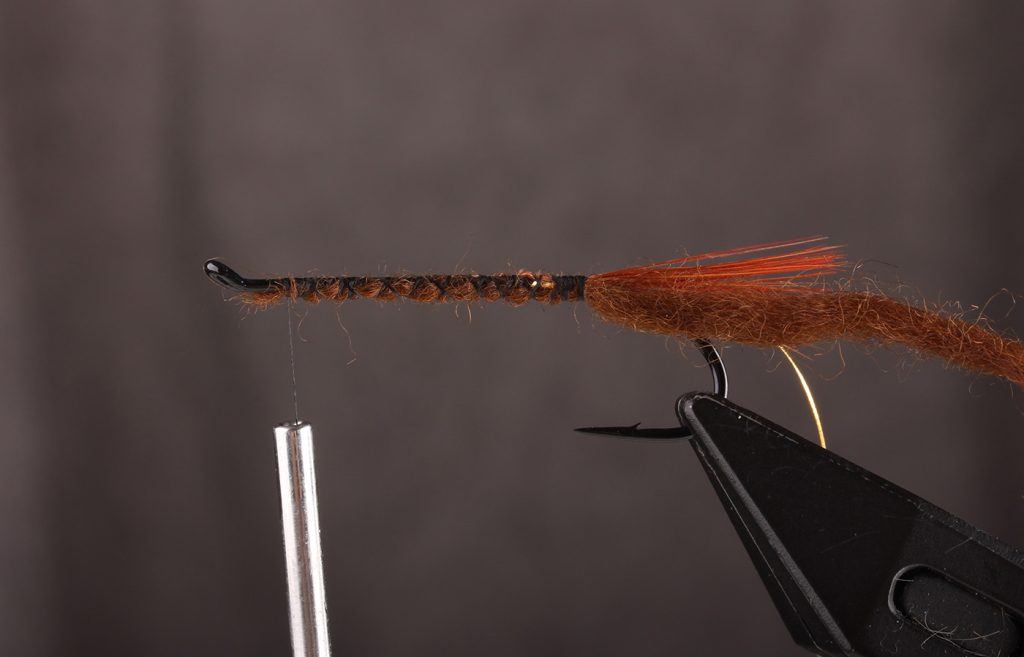

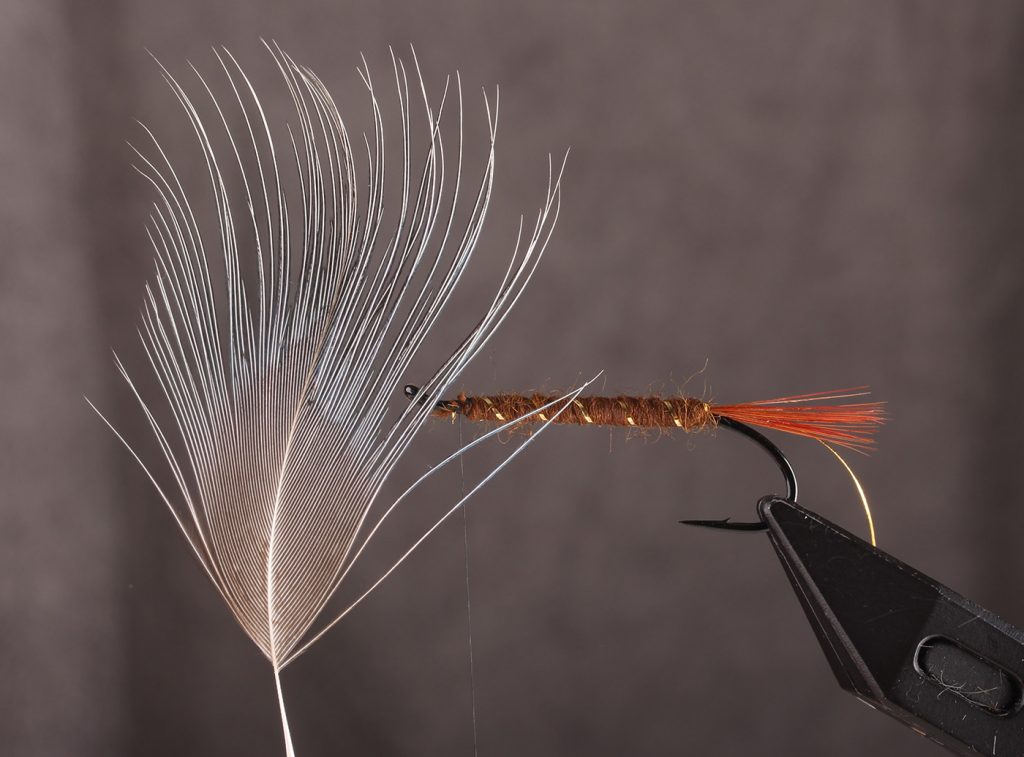

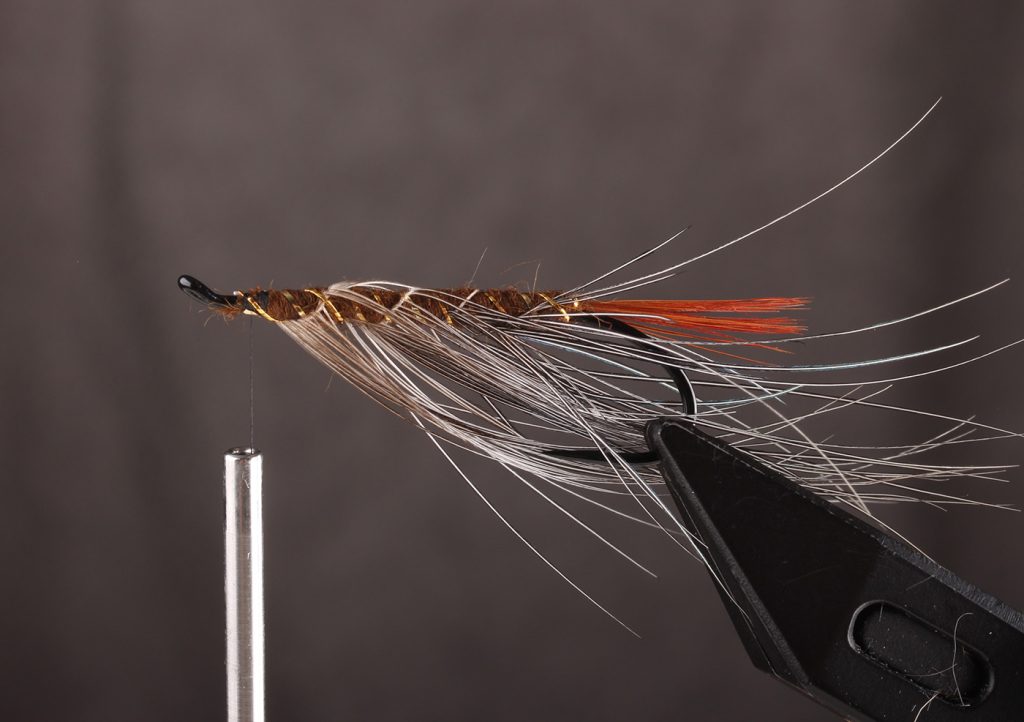
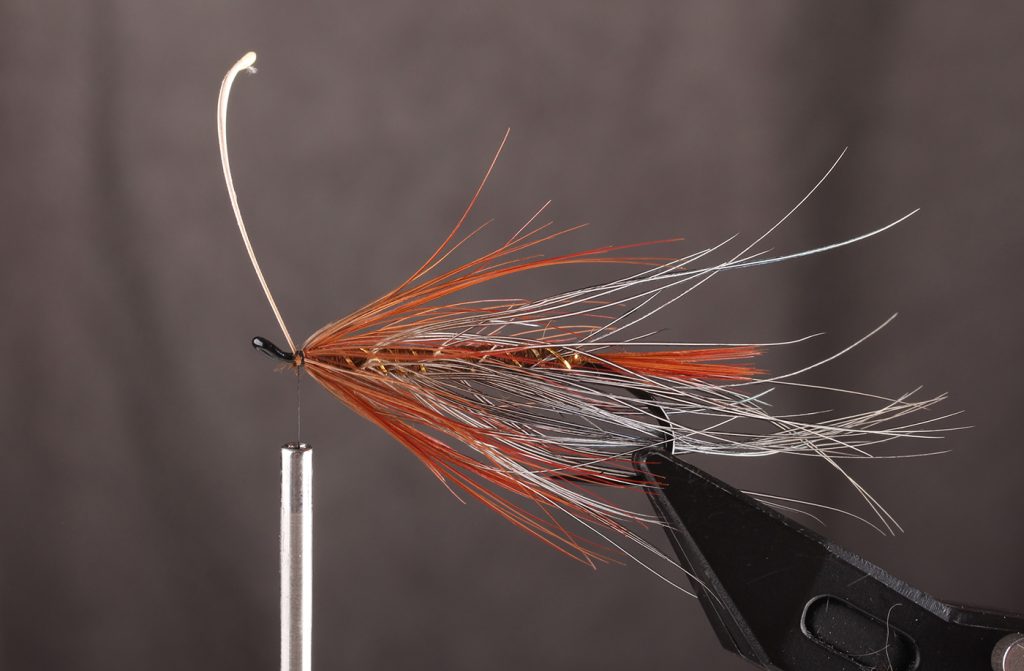
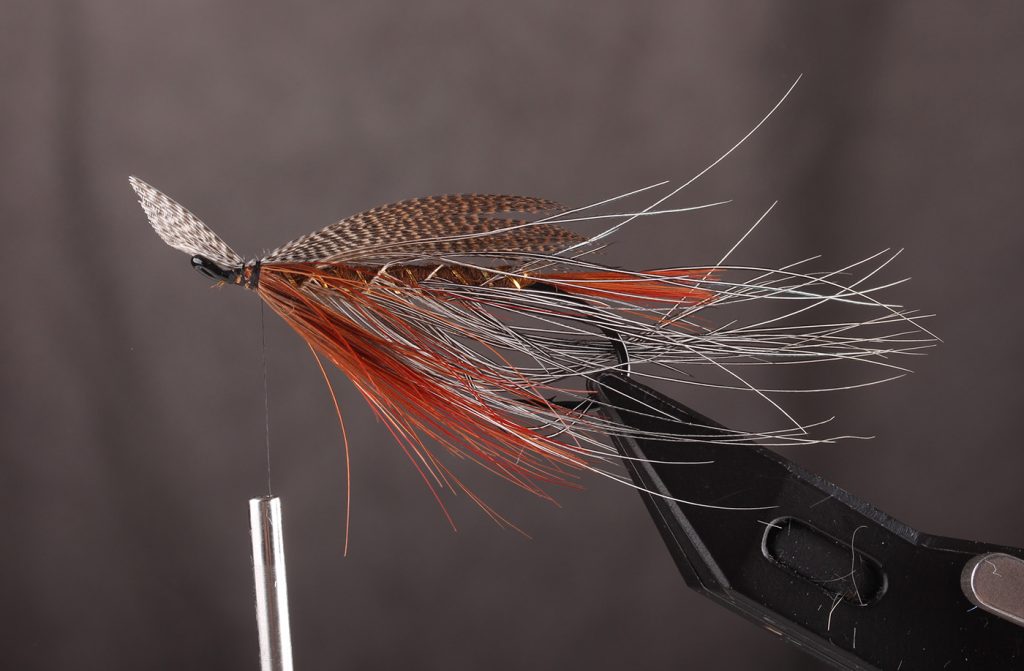

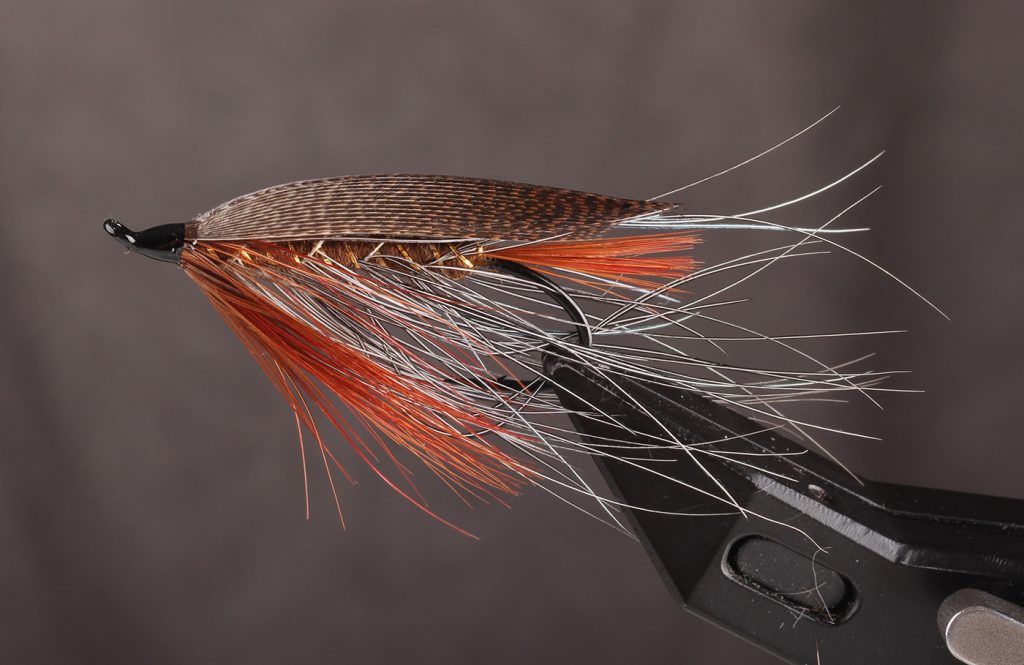
Håkan decribes in great detail how he ties the fly in this video:
Believe it or not, another way to help yourself a little is to tie on a down eye hook to begin with. The mallard is tricky and if the hook is an up eye, the eye tends to meddle with the root ends of the mallard, which a down eye doesn’t. Even a blind eye hook is easier to learn on.
Have fun tying!

